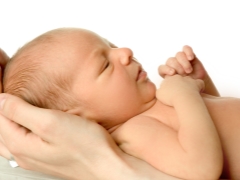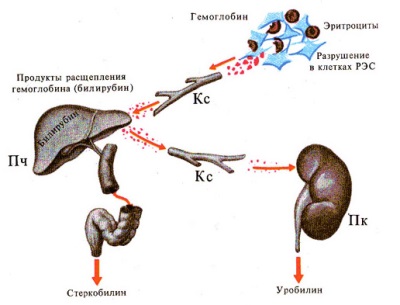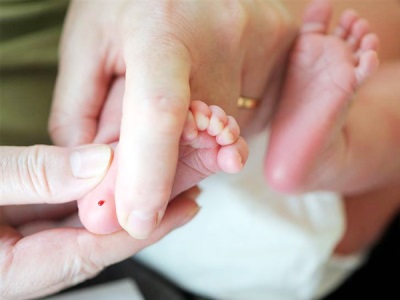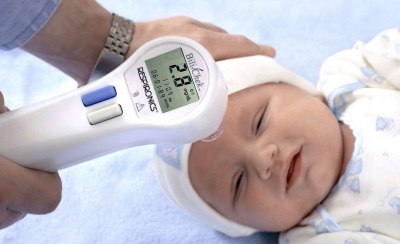How to test for bilirubin in newborns?
To assess the health of a newborn baby immediately after birth, a blood test is required. And one of the most important substances for monitoring in the first days of life in an infant’s blood is bilirubin.
What is bilirubin?
So called one of the bile pigments, which is constantly present in the human body in two fractions - free and bound. Unbound bilirubin is formed when the red blood cells from hemoglobin are destroyed. It is transferred to the bloodstream to the liver, where it binds to glucuronic acid and is secreted through the biliary tract into the intestine, and then excreted from the body.
For more information on what bilirubin is, see the video:
Why do the analysis?
In the body of a newborn, the level of bilirubin is usually elevated due to the accelerated breakdown of hemoglobin. Fetal hemoglobin, which carried oxygen during the intrauterine development of the crumbs, disintegrates, replacing it with normal (adult) hemoglobin. In addition, the baby's liver in the first months of life is still immature, and its enzyme system does not work in full force, so the binding of bilirubin is not as active as in adults.
However, jaundice in a baby in the first days of life is not only physiological. It can be caused by various diseases and congenital abnormalities. At the same time, an excessively high level of bilirubin is dangerous for children, since this substance is able to penetrate into the brain cells. To determine if the baby needs treatment and if elevated bilirubin is threatening the health of the brain, a crumb test for bilirubin is performed.
How to take a blood test?
For analysis, blood from a vein is needed in a volume of 3-5 ml. It is taken from the veins on the head, since such veins are quite large and are located superficially. Also, blood for analysis can be taken from the baby’s heel.
The procedure is harmless for crumbs and practically painless, so mom does not need to worry when taking blood. Experienced nurses take the blood, and the needle is so thin that after the manipulation, only a small puncture mark remains on the skin.
Norm indicators
At birth, the level of bilirubin in a full-term baby is approximately 50-60 µmol / L. By the third day of life, its concentration rises to 200–205 µmol / l. An increase in bilirubin above 256 µmol / l is considered dangerous.
As for premature babies, the norms for them are slightly different - the dangerous limit of the bilirubin level in such babies is 171 μmol / l. By 2-3 weeks of age, the pigment should gradually become smaller, and normally, in a child of this age, bilirubin does not exceed 20.5 µmol / l.
Tips
- To get bilirubin out of the baby’s body faster, Crumbs should be often applied to the chest, without interrupting feeding at night.
- With a child who has developed neonatal jaundice, it is recommended walk often, and at home hold air baths lasting up to 30 minutes.














